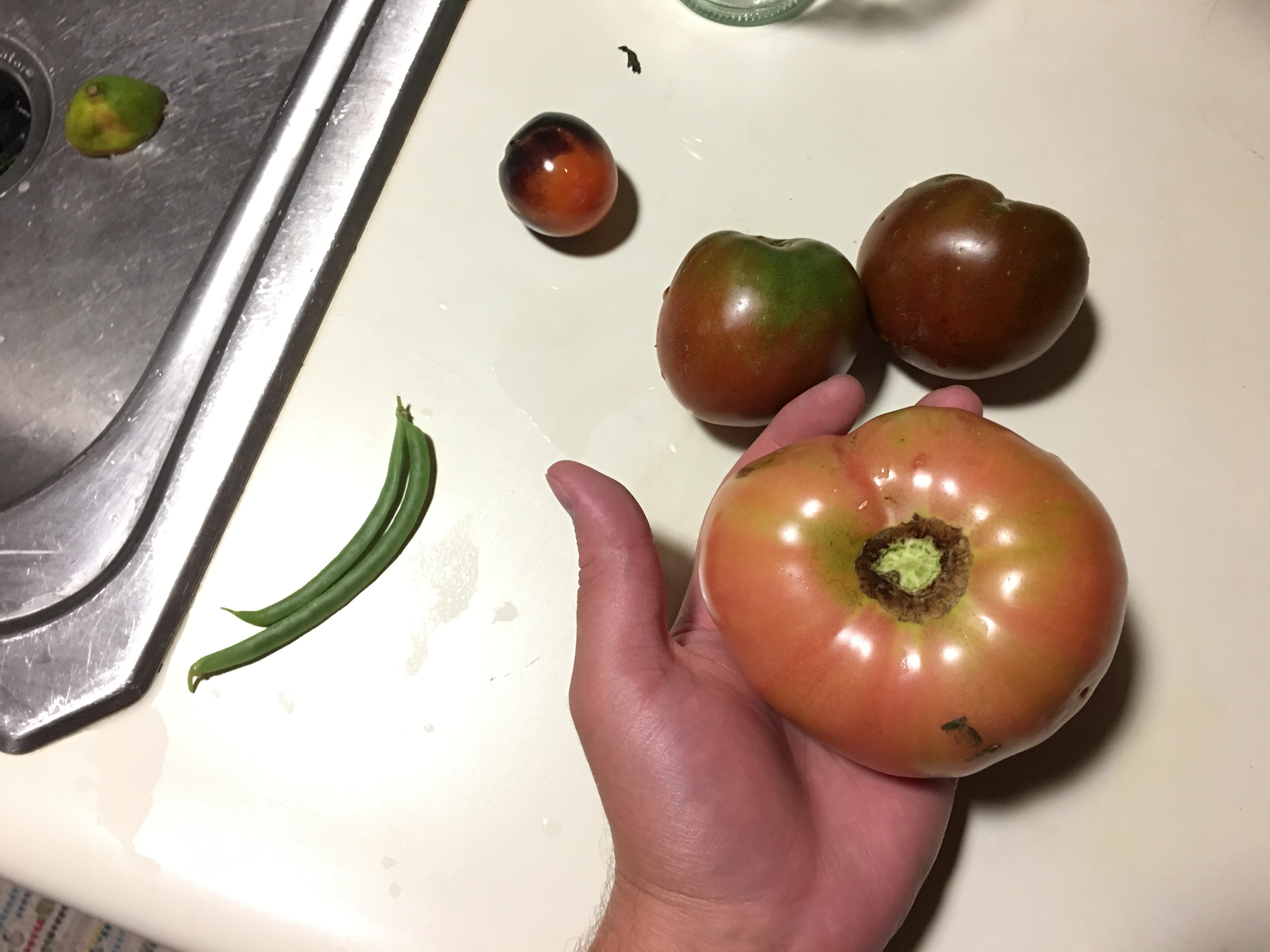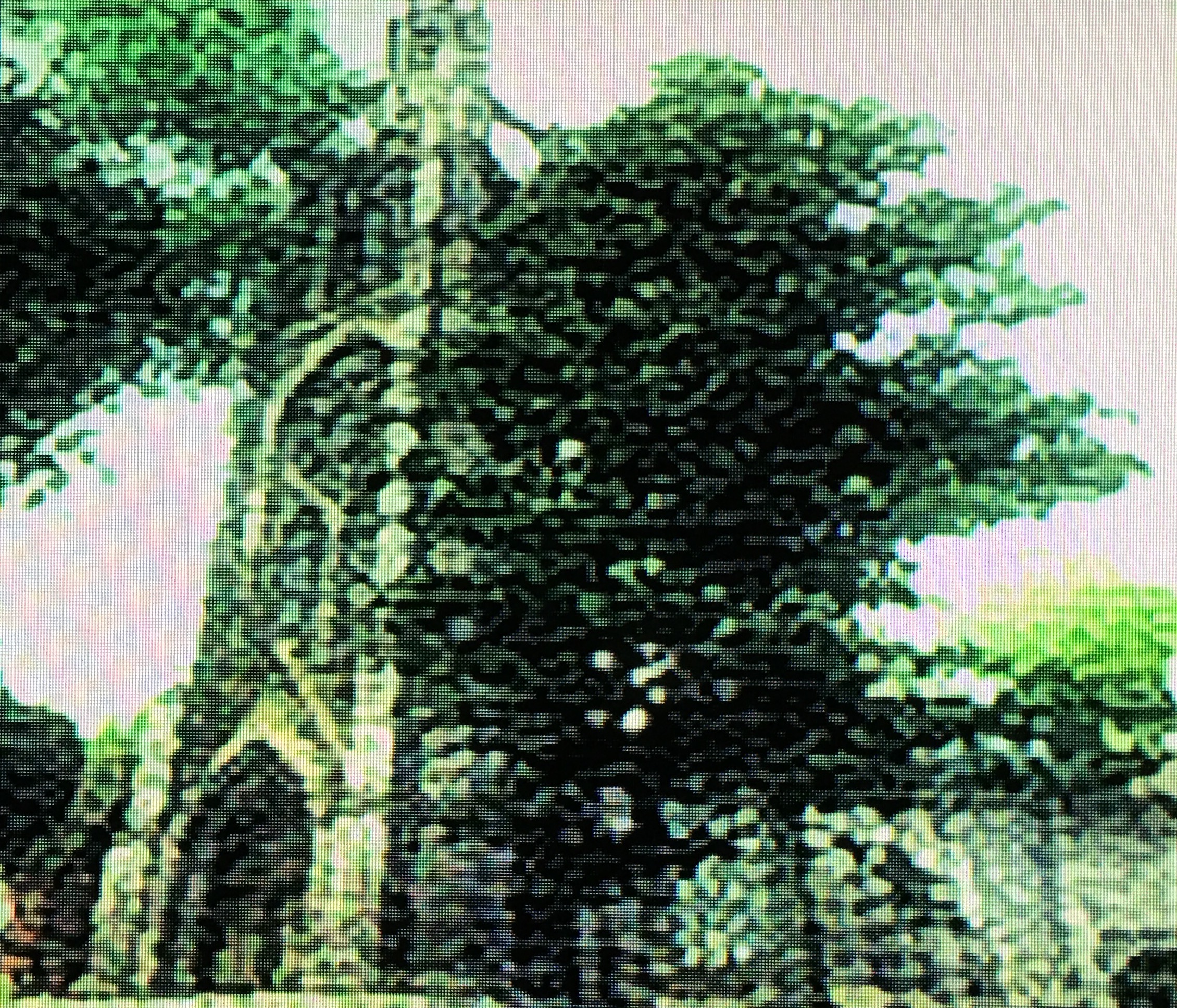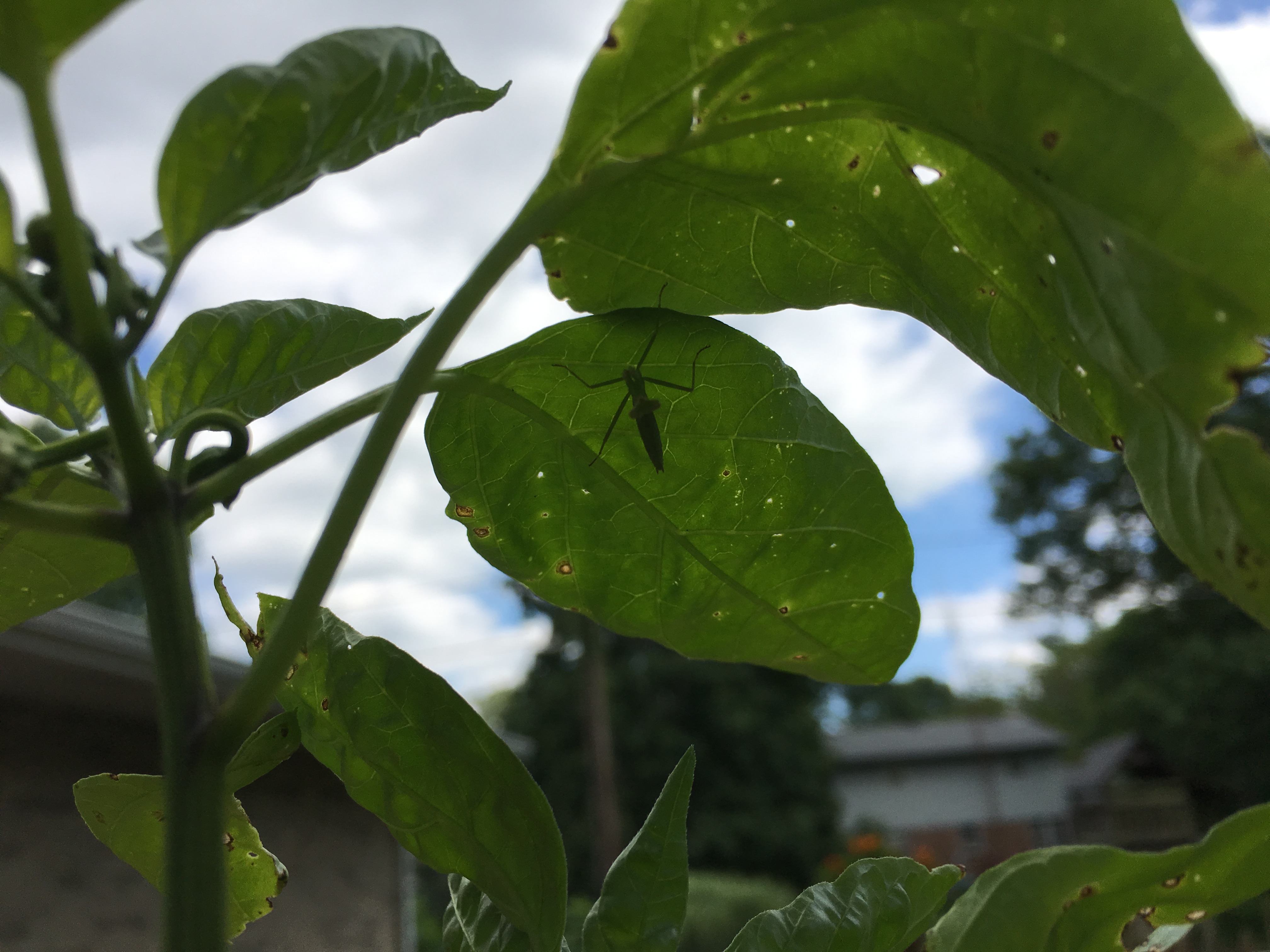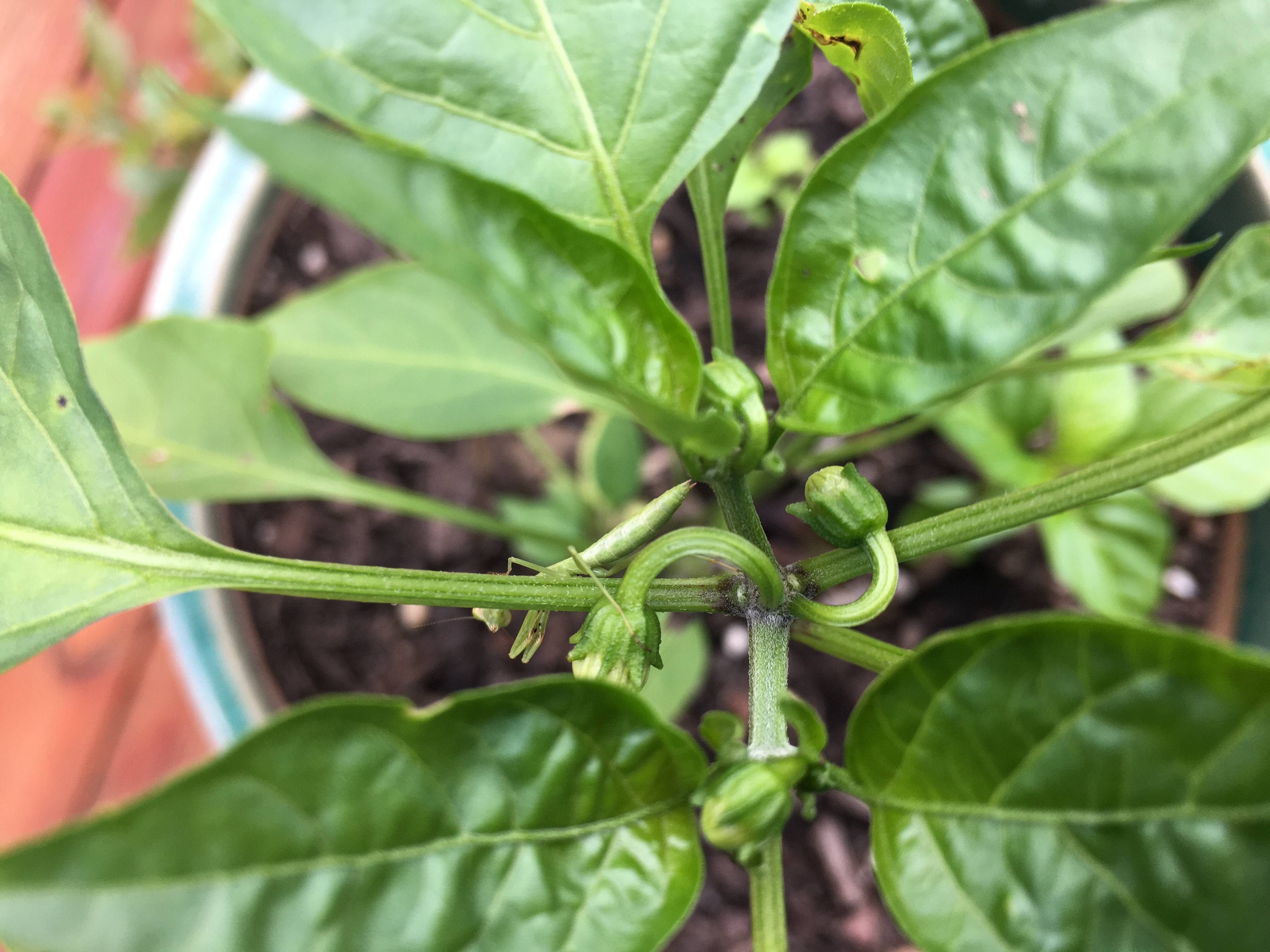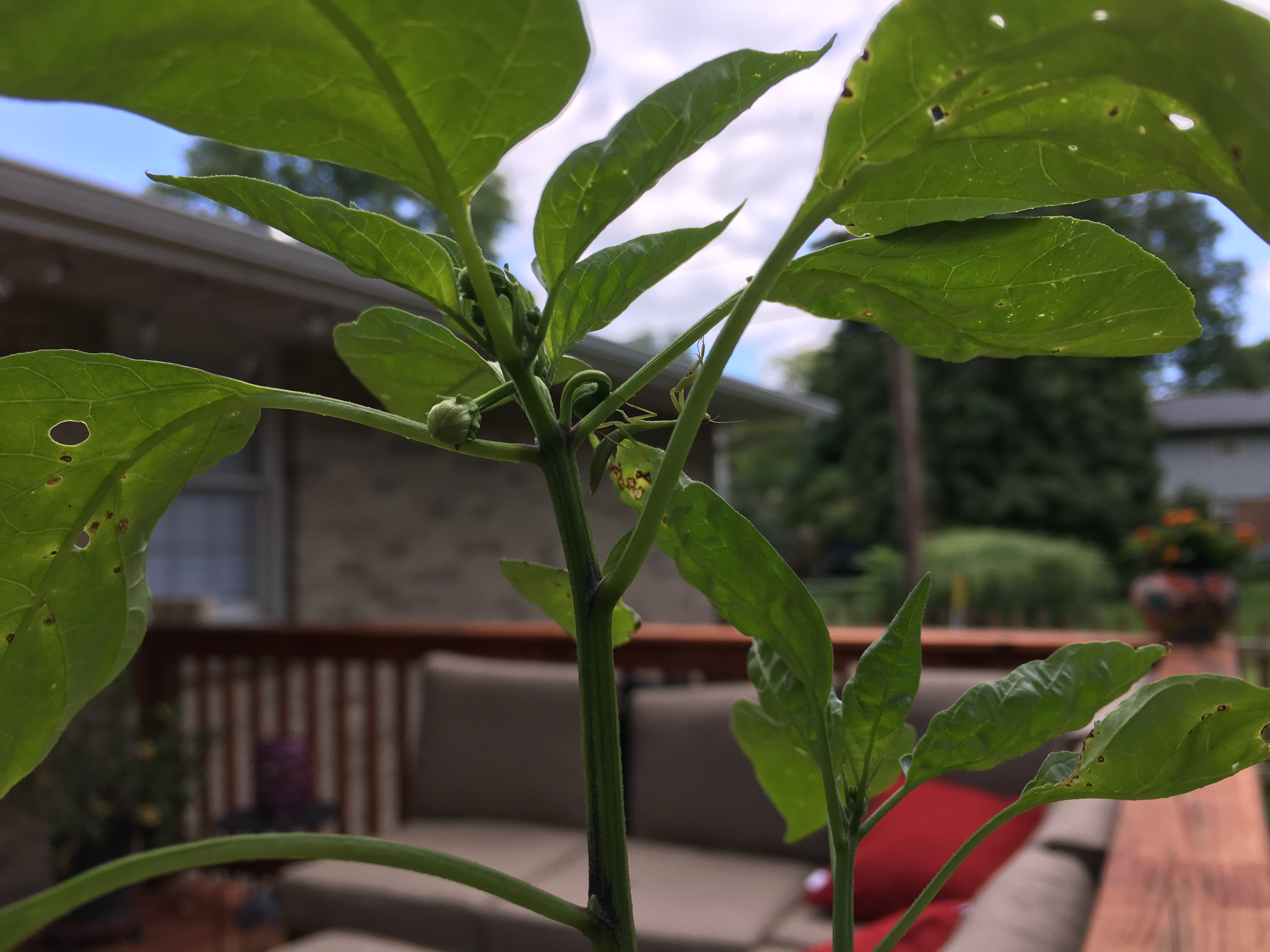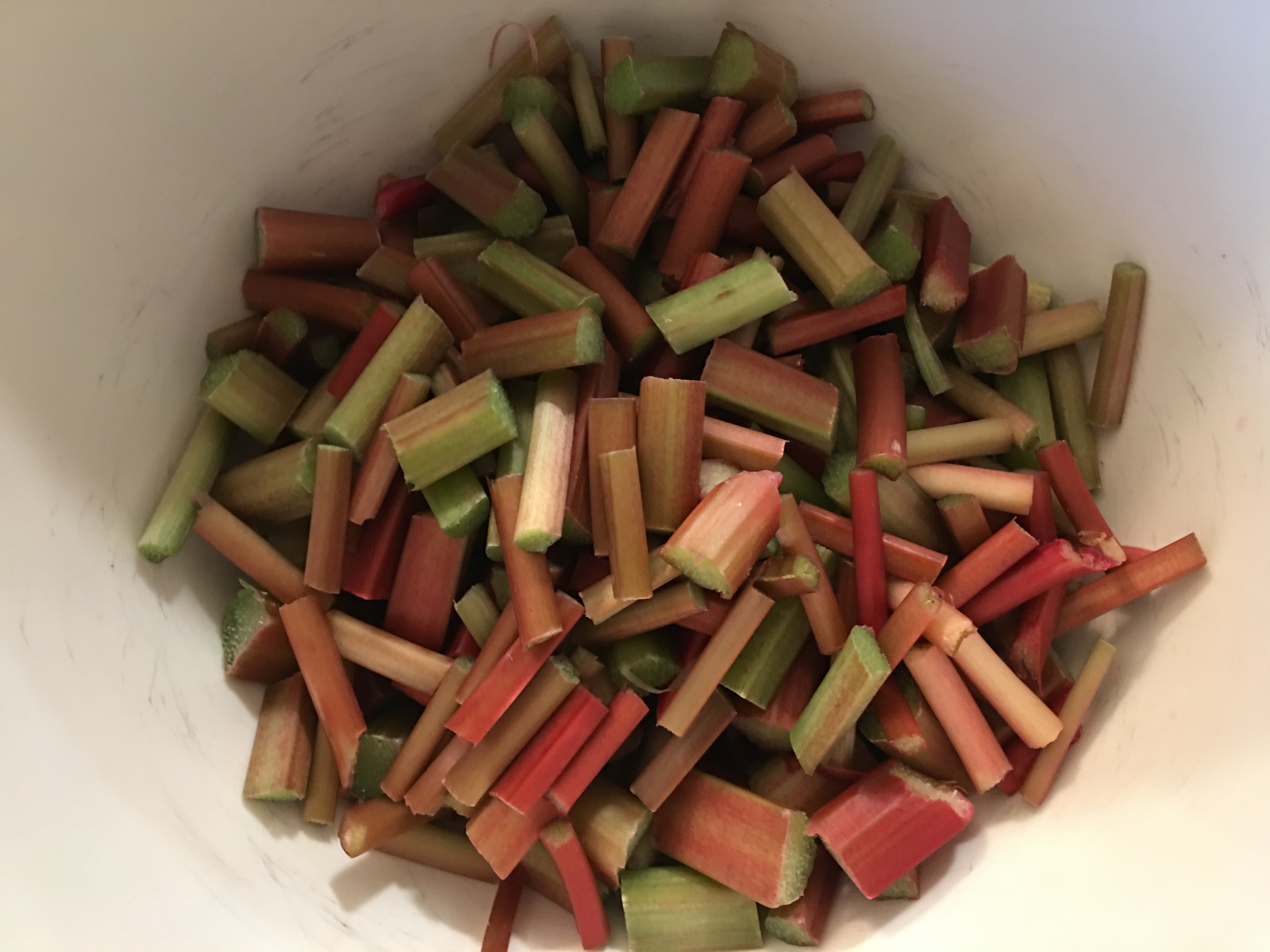To reiterate, mushrooms are creepy. And yes, that’s based on traumatic childhood events.
Liz was trimming back the mint, which as expected was overwhelming the herb garden, and uncovered this:
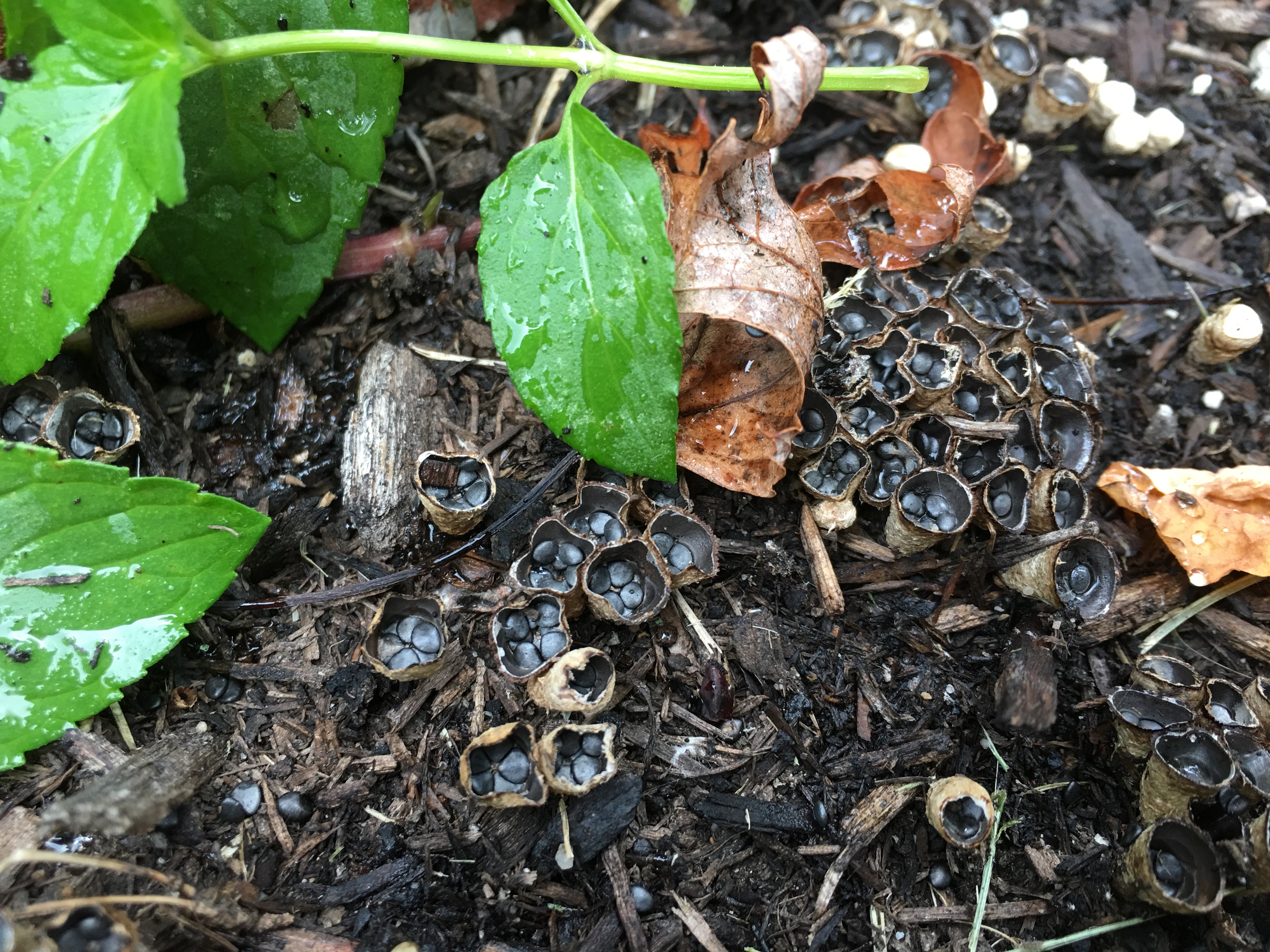
At the time, she recoiled a little at the sight, and exclaimed that there was a bee nest in the mint. It did indeed look like a nest of some kind–sort of papery, like a wasp’s. I certainly don’t mind the majority of arthropods, but I don’t relish coming into contact with them either. If it was indeed a nest, and those were larvae within, then…gross.
But I’ve never encountered any sort of nest like that, nor did it seem like a good nesting spot, so I had my doubts. Anything this weird, if not an insectoid machination, must be fungi. I snapped this picture and decided I would look into it later.
Later came after attending a résumé-building session. I was asked to coach. Interesting, that sometimes people want to know what I have to say. I’m more accustomed to shouting into the void. But anyway, I needed a respite, so I pulled up my photos and saw this. The search began.
I did not find any insect nests that resembled this, so I pursued my second theory. It wasn’t long before I discovered Bird’s Nest Fungi. It was one of the easier fungus identifications, due to it’s unique appearance. There’s a variety of species of course, but the family is Nidulariaceae. It’s possibly Crucibulum laeve. Wikipedia says they are not edible, they grow in mulch (appropriate since they were growing in potting soil), and release spores when struck by raindrops.
One more fungus species added to the catalog.
–Simon

